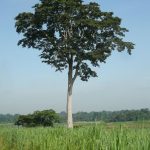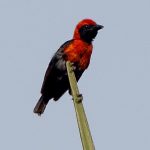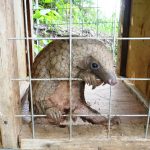The Iroko tree
One tree that stands out above all others in the IITA Ibadan campus is the iroko Milicia excelsa. There are large solitary trees in the fields, on the Golf Course, near residential and administrative buildings, and even in the hotel car park. They were left standing when the original forest was cut down because the Yoruba people regarded them as sacred. Now they are among the last in Nigeria and on the IUCN Red List status as NT (Near Threatened).
Iroko is a forest giant, reaching 50m in height, 10m in circumference and often not branching for the first 20m.
It is valued for timber and as an icon of traditional beliefs. In parts of Nigeria, people believe that an iroko was the first tree that God showed to human beings…






